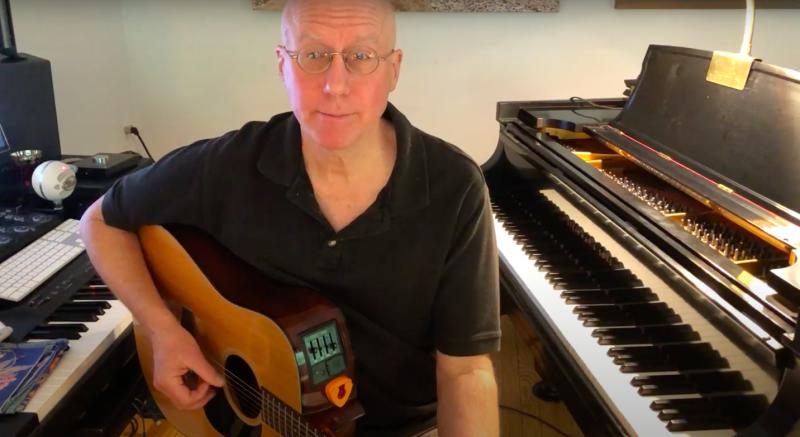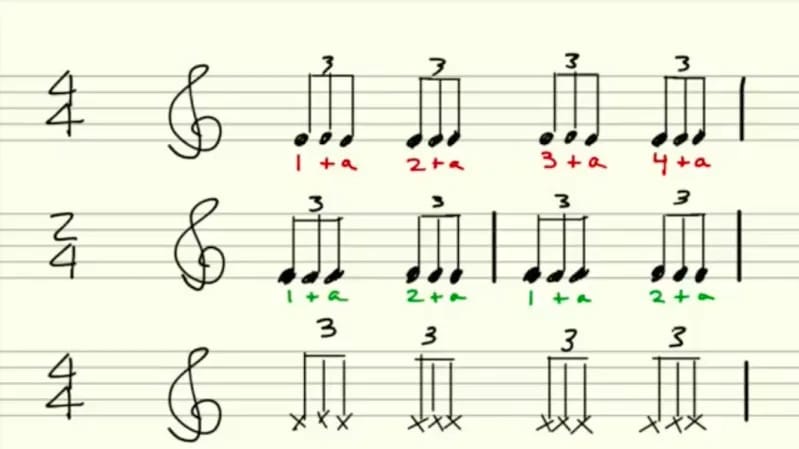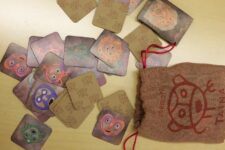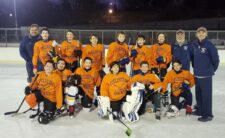The camera opens on Blake Rowe, Fieldston Lower Music Teacher, sitting between a piano and a keyboard with an acoustic guitar on his lap. “Today,” he tells us, “I thought I’d talk about song lyrics.” In his asynchronous class, we learn about rhymes at the end of lines and internal rhymes — though “you can always break the rules,” Rowe adds — before moving into the day’s songs. First up is a song Rowe wrote called “The Rhyming Song.” He picks out a tune on his guitar before the vocals come in: “Here’s a simple song / It can be short or long / You can sing it any time / you think of two words that rhyme.” He talks us through rhymes like bee and tree, and moose and goose, singing stories about the relationships between the words. It’s an energetic concert, easy to tap your feet and sing along to.
In another pre-recorded video, Fieldston Lower Music Teacher Bárbara Martinez’s voice plays over a video of Martinez jumping on a trampoline, with multiple overlapping tracks creating an a cappella composition of the pop song “Trampoline” by Shaed. “I’ve been on the trampoline / jumping in the air,” Martinez sings, with overlaid doo-doo-doo’s in the background. The camera cuts to Martinez in her home, sitting behind a microphone and making solfege hand signs while singing. The song ends, and Martinez explains how she made her version of the song using a looper, her own voice, and body percussion. She then discusses the music theory behind the song. The 20-minute video explodes the song into all of its discrete parts before putting them back together again as a cohesive whole.
In remote learning, music classes like these happen weekly for each grade. As they do when they’re in the classroom, instructors lead students through echo and response, listening exercises, and solfege. There’s also a movement element: Martinez and Rowe often teach students dance steps and routines.
Teaching music online presents a challenge, especially during these asynchronous classes. “It’s been a creative project to be teaching with no feedback” — no murmurs of agreement, head nods, or other other ways students show their engagement, Rowe says. Martinez also points out that “we have to assume that people have different things going on in their homes, with different technology and parental support available.” That’s where the technology comes in: These classes don’t just disappear. Students can access them when they’re able to, based on the needs of each family.

Each week, one grade has a synchronous class, which can be a boisterous affair. (“I have to have them mute themselves because if they start singing along with me, it gets very confusing pretty quickly,” Martinez laughs.) Instead of a lecture-style class, these synchronous sessions — in which the classes meet in half-groups — are more like “office hours,” Rowe says. They present an opportunity to go over the lessons from that week’s videos, and they’re also a chance to connect with students for some much-needed face time.
The classes also let students and teachers alike get that rapport they’ve been missing — meetings over Google Meet are a stage with an audience. Rowe, who teaches Fieldston Lower’s older students, says that they’ve continued the tradition of performing for the class, “where one student at a time gets a chance to be the star.” Whether a student has an instrument at home or relies on their voice alone, the class gets to take in the show and marvel at their friend’s talents.
In her live classes with the younger grades, Martinez keeps it organic and translates her in-person instruction to the computer screen. Before ECFS’s campuses closed, Pre-K students made tambourines and kazoos in Social Studies Workshop. During live sessions, students learn about rhythm using their own instruments and present to the class the process of instrument-crafting. There’s always also a movement activity like Che-Che-Kule, a Ghananian dancing game that involves your head, shoulders, knees, and toes. Sometimes, students will volunteer to lead — one of the ways that Martinez can incorporate the feeling of being in a group. “Thirty minutes goes flying by,” she says.

In this moment of remote learning, music remains a critical component of Fieldston Lower students’ education. And while students continue to learn music theory — melody, rhythm, harmony, and scales — they also have the opportunity to connect, work together, find their place in the spotlight, and applaud their peers. It’s a holistic way to meet the needs of students learning from home, who are writing their own composition in the new normal.



